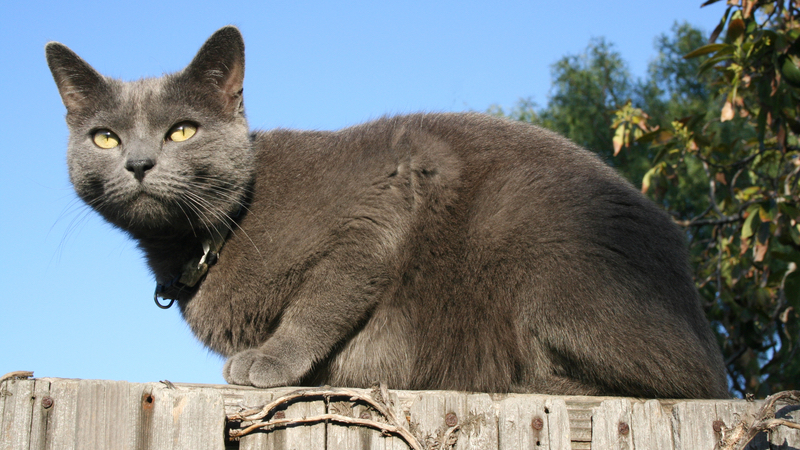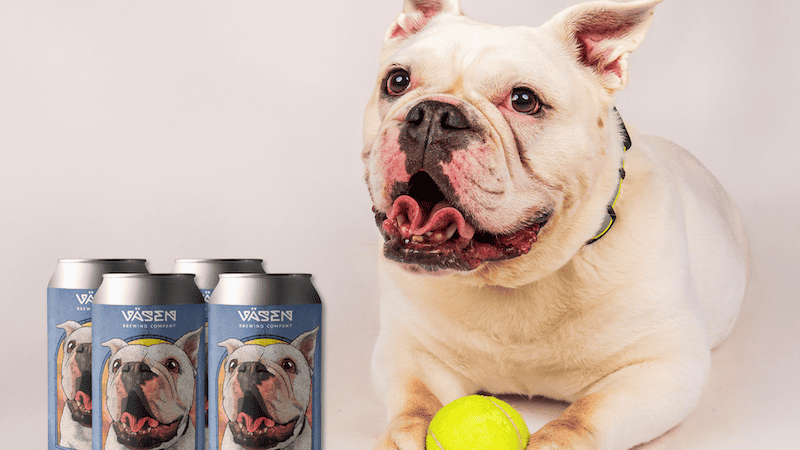Outdoor Cat Safety and Dog Tear Stains
Tips from ‘My Pet World’ readers

In this edition of “My Pet World,” pet advisor Cathy M. Rosenthal responds to reader input on two issues addressed in earlier columns: outdoor cat safety – including cat-proof fencing options – and tear stains around dogs’ eyes.
Dear Cathy,
In regard to your column on cat-proofing your yard, I wanted to share that I have an Invisible Fence for my cat, and it works beautifully. People are always surprised when I tell them that because the system is most often used for dogs. You can tell the installer which areas you want the cat to be able to access and they install the wire accordingly. My cat wears a collar when he goes outside, which doesn’t bother him at all. There is a training period, which the installers help with. The current doesn’t hurt the animal. I put it against my hand. It makes an unpleasant but not painful sensation. It has worked perfectly for me. My cat gets the freedom of the yard, without getting out into the road. My cat isn’t a hunter, so there’s no added danger to wildlife. I think it would be good if more people realized that it’s a viable option.
— Janis, Riverhead, New York
Dear Janis,
It sometimes surprises people to learn that they can train cats in a comparable manner to dogs, but I had not heard of anyone using this product for a cat. But I checked and the company does offer products for felines. I am glad you tested the collar strength on your hand first before putting it on your cat. I have felt it, and agree it’s unpleasant but not painful. And it looks like the cat collar is a feather-lite collar so not something heavy for your feline to wear, which is good. Most cats are hunters though, so this may not be a solution for those cats.
We do need to get more creative, however, in how we keep our cats safe while at the same time giving them time outside. I currently put my cat in a cat tent under a covered deck. Sometimes, I place the mesh tent in the front yard when I am doing yard work so he can hang out with me and sleep on the grass that pokes through the mesh of the tent. I am enclosing a patio, so he has a larger space to hang out, and I plan to put a patch of grass in it for him. (I would love to hear about other creative ways to give cats safe outdoor time.)
Just remember, it’s important to use flea, tick, and heartworm preventatives (yes, cats can get heartworm) on any felines that are exposed to the outdoors.
Thanks for your idea, Janis.
 Dear Cathy,
Dear Cathy,
I read the letter from Lois from New York regarding tear stains. I have an 8-year-old cavachon (have cavalier and half bichon). She is white with apricot marking. When she was 4 years old, she started getting orange stains around her eyes and urinary area. I was alarmed and knew something was wrong.
I took her to the vet and got all the standard responses: allergies, food dyes, common among certain breeds, etc. There are over-the-counter products for stain removal, both topical and pills, but nothing works.
I finally found the answer through a helpful vet and the owner of a feed/livestock store in Arizona. In my dog’s case, the staining was caused by Porphyrins in the bile and intestinal tract. She was put on antibiotics and, low and behold, it disappeared. Six months later it came back. The vet didn’t want to prescribe more antibiotics. But the wise old owner of the feed store understood my problem. He sold me a probiotic (powder form) to put in her food. She is now 9 years old and has never had stains again. She gets her probiotic in her food every morning still.
— Valerie, Tucson, Arizona
Dear Valerie,
I have gotten many letters regarding remedies for tear stains. Most involve daily cleaning around the eye area, which is essential, but some involve changes in diet. Each letter had a different suggestion for solving the problem, which just goes to show you one size does not fit all when it comes to tear stains.
So, what’s the best solution for tear stains? The one that works for your dog. In your instance, your dog had an underlying health problem, which is why it’s important to always rule out health problems first. Probiotics are good for your dog’s digestion, and it is easy enough for people to try regardless of their diet. It’s essential, though, to clean the hair around your dog’s eyes daily and trim the hair around the eyes to keep the hair from irritating the eyes even more.
Cathy M. Rosenthal is a longtime animal advocate, author, columnist, and pet expert who has more than 25 years in the animal welfare field. She addresses reader questions as diverse as outdoor cat safety to bizarre dog behavior. Send your pet questions, stories, and tips to cathy@petpundit.com. Please include your name, city, and state. You can follow her @cathymrosenthal.
© Tribune Content Agency, LLC


